CEEC Fall Symposium
AGENDA
CLICK HERE to view the symposium agenda
The CEEC Fall Symposium will engage attendees on scaling and accelerating the deployment of electrochemical energy storage and conversion technologies. Symposium panels will draw on learnings from CEEC labs, industry partners, and startups spun out of CEEC labs.
A poster session curated by CEEC’s 50 PhD students and postdocs will provide industry participants with an atoms to markets view of electrochemical energy applications including fast-charging EV LiB’s, grid scale storage, electrolysis, hydrometallurgy, and more.
SYMPOSIUM SPEAKERS
Dr. Katherine Ayers is Vice President of R&D for Nel Hydrogen US, with responsibility for Nel’s technology strategy in PEM electrolysis. She received her Ph.D. in chemistry at Caltech and spent 10 years in the battery industry before joining Nel in 2007. She manages a broad portfolio of projects across a range of collaborators, spanning the product development process from fundamentals to implementation. Dr. Ayers has served on multiple scientific advisory boards and committees for DOE and received an R&D award at the 2021 DOE Annual Merit Review. She became a Fellow of the Electrochemical Society in 2020.

Marissa Beatty recently completed her Ph.D. in the chemical engineering department of Columbia University, where her research focused on developing universal design principles for an emerging class of novel electrocatalyst structures. She now applies these principles towards the design of robust electrolyzers that can convert impure carbon dioxide waste streams into valuable chemical fuels, without degradation of device efficiency, selectivity, or lifetime.

Andrew Chang (he/him) is the managing director of the Activate New York Community, where he supports Activate Fellows building new decarbonization technology platforms. Before Activate, he was in Singapore building ASUS’ deeptech venture studio program. He spent the previous seven years co-founding and growing a digital health and wearable device company. During the Obama administration, he served in the U.S. Department of Energy and started his career working for Al Gore’s climate non-profit. Chang holds 13 patents, a master’s in climate and energy from Stanford University, and a bachelor’s in electrical engineering from the University of Michigan.
Shih-Fu Chang is Dean of Columbia Engineering, where he leads the education, research, and innovation mission of Columbia Engineering with more than 240 faculty, 1,700 undergraduate students, and 2,600 graduate students. At Columbia Engineering, Dean Chang has greatly contributed to the growth and advancement of the School, propelling it to be one of the top engineering programs in the nation. He was also instrumental in the creation of the School’s guiding vision, Columbia Engineering for Humanity, and the school’s strategy for diversity, equity, and inclusion. Dean Chang also holds appointments in the departments of Electrical Engineering and Computer Science. He is one of the most influential experts in multimedia, computer vision, and artificial intelligence.
Currently leading the commercialization of electrochemical technologies within Shell, Dr. Paul Corbett has spent the previous three years building the electrochemistry capability and laboratory (e-Lab) at the Energy Transition Campus Amsterdam (ETCA). Previous roles within Shell consisted of research in redox flow batteries, future mobility and waste recycling. Departing academia in 2017, Paul carried out his PhD at Imperial College London focusing on solvent systems and electrochemistry. This was followed directly with a postdoctoral position researching polymeric ionic liquids for carbon capture and batter storage applications.
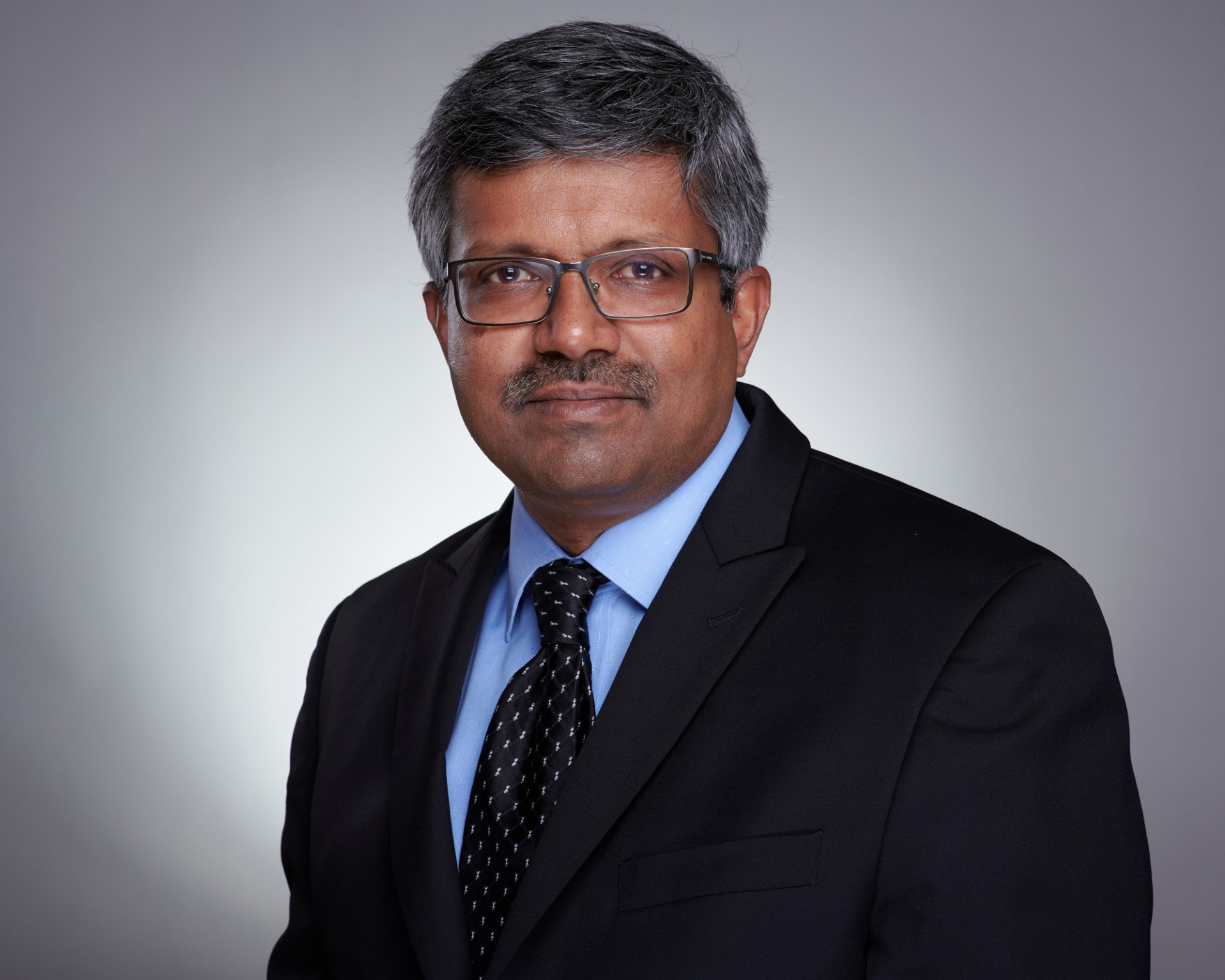
Dr. Anantha Desikan has been serving as Executive Vice President and Chief Research, Development & Innovation Officer of ICL since 2018. Prior thereto, Dr. Desikan served as Senior Vice President of ICL Industrial Products’ Flame Retardants business, as well as several other management and technology management positions at ICL including President, ICL-IP America, and VP of Global Phosphorous R&D. Prior to joining ICL in 2007, Dr. Desikan held technology management roles at Supresta and Akzo Nobel. He holds a Ph.D. and M.S in Chemical Engineering from Clarkson University, Potsdam, New York, and a BS in Chemical Engineering from Coimbatore Institute of Technology, Madras University, India. Anantha is based in Tarrytown, New York.
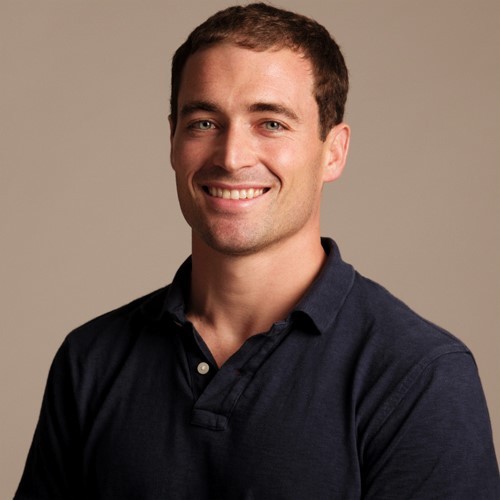
Daniel Esposito received his Ph.D. in Chemical Engineering from the University of Delaware and studied as a postdoctoral research associate at the National Institute of Standards and Technology. He is now an Associate Professor in Chemical Engineering and a core member of the Columbia Electrochemical Energy Center. His group’s research interests relate broadly to electrochemistry for clean energy applications, including but not limited to electrolyzers, fuel cells, and solar fuels generators. Esposito was named a Scialog Fellow in Advanced Energy Storage, an NSF CAREER award winner, and is a co-founder and advisor of the start-up company sHYp BV PBC.

Dr. Melissa C. Lott is the Director of Research at Columbia University’s SIPA Center on Global Energy Policy. She has worked as an engineer and researcher for nearly 20 years in North America, Europe, and Asia. Dr. Lott specializes in technology and policy research, working to increase our understanding of the impacts of our energy systems on air pollution and public health. Prior to joining CGEP, Dr. Lott was the Asst. Vice President of the Asia Pacific Energy Research Centre and held roles at the International Energy Agency and U.S. Department of Energy.

Lauren Marbella is an Assistant Professor in the Department of Chemical Engineering at Columbia University. Her research group focuses on understanding the relationship between electrochemical performance and interfacial chemistry in devices for energy storage and conversion. Her research relies heavily on the use of nuclear magnetic resonance imaging (MRI) and spectroscopy to evaluate changes in material properties in real time to elucidate the chemical mechanisms underpinning degradation in Li and beyond Li ion battery systems. Marbella’s research has received numerous awards including the Cottrell Scholar Award (2022), the National Science Foundation (NSF) Faculty Early Career Development (CAREER) Award (2021), and the Scialog Collaborative Innovation Award for Advanced Energy Storage (Sloan Foundation, 2019).
Marbella received her PhD in chemistry from the University of Pittsburgh in 2016, under the direction of Prof. Jill Millstone. In 2017, she was named a Marie Curie Postdoctoral Fellow at the University of Cambridge in the group of Prof. Clare Grey. There, she was also named the Charles and Katharine Darwin Research Fellow, which recognizes the top junior fellow at Darwin College at the University of Cambridge. She joined the chemical engineering faculty at Columbia University in 2018.
Vijay Modi is a Professor in Columbia University’s Department of Mechanical Engineering, and also a member of the Earth and Data Science Institutes and Climate School’s faculty. He directs the Quadracci Sustainable Engineering Laboratory (QSEL). Prof. Modi’s areas of expertise are energy resources and energy conversion technologies. He has more than 30 years of experience in energy resources/conversion applied research, including thermal power generation, gas turbines, solar and wind technologies. In the last decade his laboratory has carried out pioneering work in digital mini-grids that integrate electricity supply/demand monitoring, dynamic allocation of energy/power resources to individual customers and the use of Internet of Things (IoT) for account management.
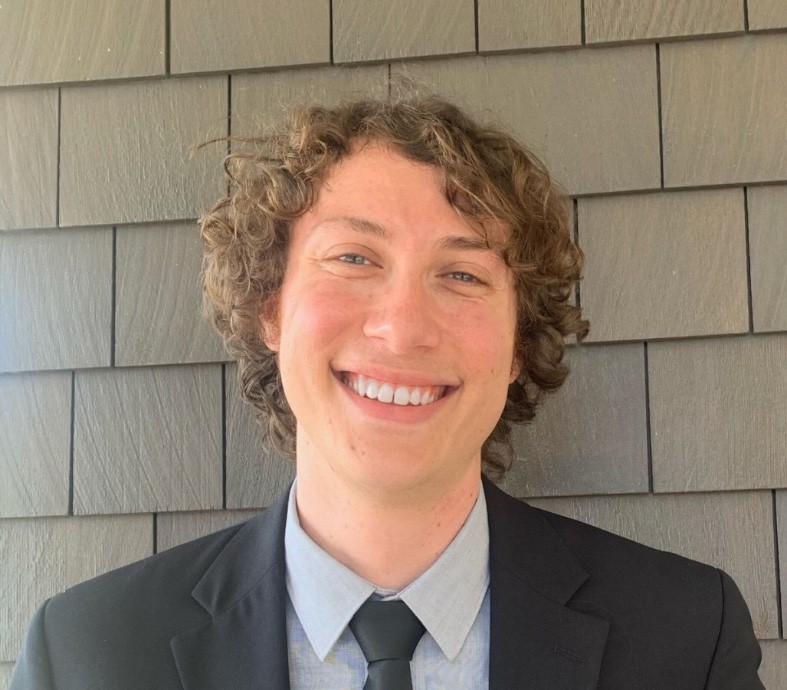
Rob Mohr’s career has been centered on the problem of affordable energy storage. Previously he worked for two startup battery companies before coming to Columbia to do a PhD in Chemical Engineering. Through a focus on practical systems with real world applications he developed a new battery technology for stationary energy storage focused on low cost, reliability, and scalability. As a member of Activate NY he is spinning this technology out of the lab and into his company Innate Energy which is building affordable battery systems with applications ranging from the individual home all the way to the grid.

Matthias Preindl received the B.Sc. degree from the University of Padua (summa cum laude, 2008), the M.Sc. degree from ETH Zurich (2010), and the Ph.D. degree from the University of Padua (2014), in electrical engineering. He is an Associate Professor at Columbia University, USA. Prior to joining Columbia in 2016, he was an R&D Engineer of Power Electronics and Drives at Leitwind AG (2010-2012), a Post-Doctoral Research Associate at McMaster University, Canada (2014-2015).
Dr. Preindl serves as Area Editor of IEEE Transactions on Vehicular Technology and was the general chair of 2022 IEEE/AIAA ITEC+EATS. He is a Fellow of IET, Senior Member of IEEE, recipient of the NSF CAREER Award (2017), IEEE Transactions on Industrial Electronics best paper award (2019) and co-recipient of Fast Company's World Changing Ideas Awards honorable mention (2022). His research interests include the design and control of motor drives, power electronics, and batteries for transportation electrification and renewable energy.
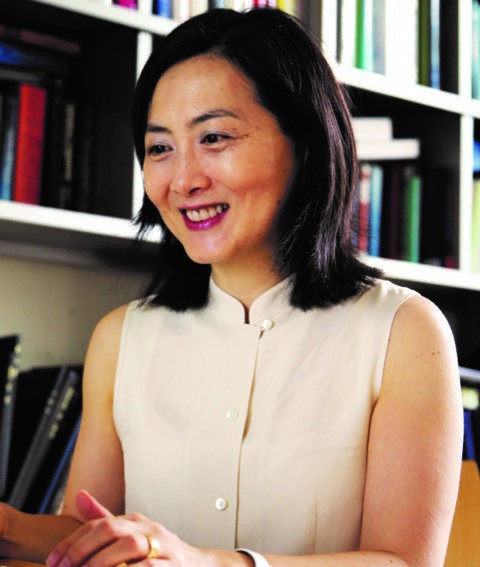
Yang Shao-Horn is JR EAST Professor of Engineering and faculty in the Department of Mechanical Engineering, Department of Materials Science and Engineering and the Research Laboratory of Electronics at MIT. Her research is centered on using physical/material chemistry to control kinetics and dynamics in processes of making zero-carbon energy, chemicals and fuels.
Prof. Shao-Horn is a member of the National Academy of Engineering and a fellow of the American Association for the Advancement of Science, the Electrochemical Society, the National Academy of Inventors and the International Society of Electrochemistry. Her work has been recognized by the Faraday Medal of Royal Society of Chemistry 2018, the Dr. Karl Wamsler Innovation Award from the Technical University of Munich 2020 and Humbolt Prize in Chemistry from the Alexander von Humboldt Foundation 2020. She has served on advisory and corporate boards of non-profit and for-profit organizations and has advised 100+ students and postdocs at MIT, who are now pursuing successful careers in industry, national research laboratories, and in academia.

Dr. Constantine Spanos currently serves as a Senior Technical Program Manager at Consolidated Edison, where he has led new technology and business case R&D since 2016. His work centers on the integration of novel distributed energy resources, including energy storage systems and power electronics devices, into the transmission and distribution grids. Prior to this he led research related to military microgrids and electrical grids as a Battery Engineering Fellow for the Department of Defense and the National Science Foundation. He also served as an Infrastructure Analyst at both the state and municipal levels in New York. Dr. Spanos holds a Ph.D. and M.S. in Chemical and Environmental Engineering from Columbia University, as well as a B.Eng. in Structural Engineering from The City College of New York.
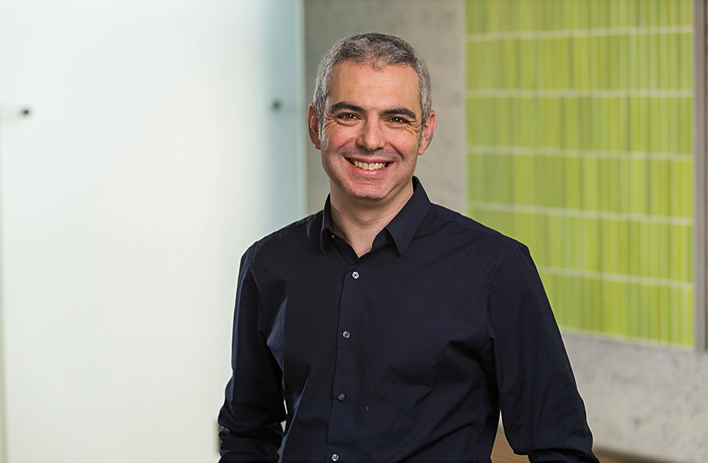
Daniel Steingart is the Stanley Thompson Professor of Chemical Metallurgy and Chemical Engineering and the co-director of the Columbia Electrochemical Energy Center. His group studies the systematic behaviors of material deposition, conversion, and dissolution in electrochemical reactors with a focus on energy storage devices. His current research looks to exploit traditional failure mechanisms and interactions in batteries and materials productions, turning unwanted behaviors into beneficial mechanisms. He is currently on leave from Columbia in his role as Chief Scientist at ElectraSteel, a startup that is reducing CO2 emissions from Steel production by over 95%
His efforts in this area over the last decade have been adopted by various industries and have led directly or indirectly to five electrochemical energy related startup companies, the latest being Feasible, an effort dedicated to exploiting the inherent acoustic responses of closed electrochemical systems. Steingart joined Columbia Engineering in 2019 from Princeton University where he was an associate professor in the department of mechanical and aerospace engineering and the Andlinger Center for Energy and the Environment. Earlier, he was an assistant professor in chemical engineering at the City College of the City University of New York. Even earlier he was an engineer at two energy related startups . He received his PhD from the University of California, Berkeley, in 2006.
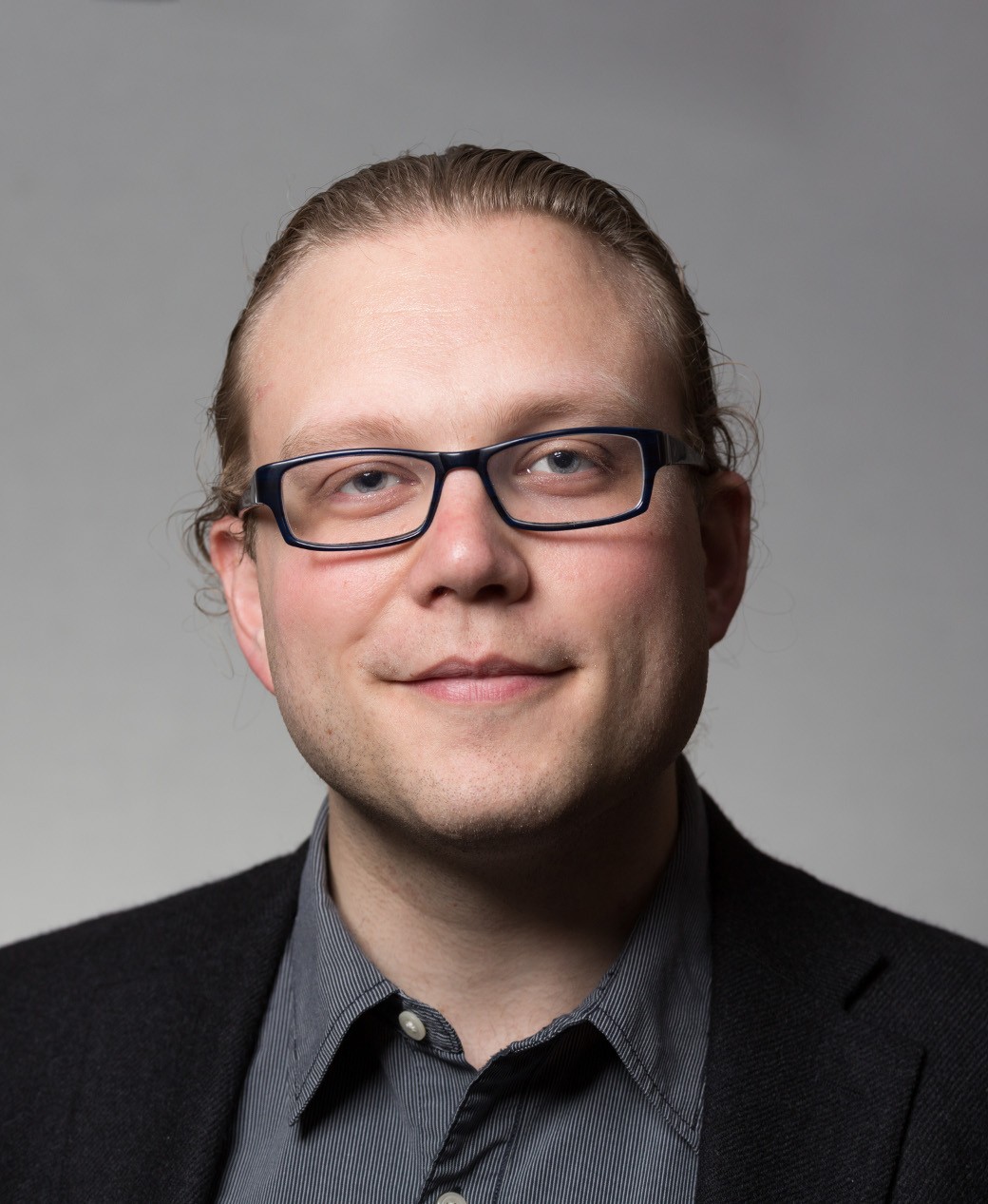
Alex Urban is an Assistant Professor of Chemical Engineering and a core faculty-member of the Columbia Electrochemical Energy Center (CEEC) and the Columbia Center for Computational Electrochemistry (CCCE). Prior to joining the Department of Chemical Engineering at Columbia University in 2019, Alex was an independent University Fellow at the University of St Andrews, UK. He obtained his PhD from FAU Erlangen-Nuremberg in Germany and conducted postdoctoral research at MIT and UC Berkeley. Alex has been named a Scialog Fellow for Advanced Energy Storage by the Research Corporation for Science Advancement. His research interests are in understanding and discovering materials and processes for clean-energy applications using atomic-scale modeling and data science methods.

Jon Vardner completed his Ph.D. in chemical engineering at Columbia University where he was an NSF Graduate Research Fellow. He developed and co-invented technologies that enable the sustainable production of copper. He continued his postdoctoral studies at Columbia to realize the potential of his process. Now, he is an Activate fellow and co-founder of Still Bright to bring his technology to market and help facilitate the global transition to renewables.
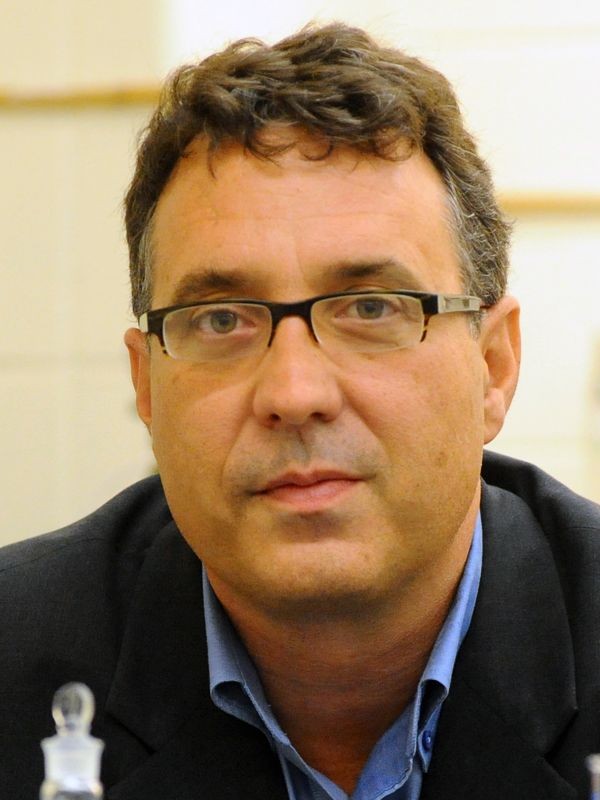
Alan West received his PhD in Chemical Engineering from the University of California and his BS from Case Western Reserve University. He is the co-director of the Columbia Electrochemical Energy Center and is the Samuel Ruben-Peter G. Viele Professor of Electrochemistry, with appointments in the Department of Chemical Engineering and the Department of Earth and Environmental Engineering. His research interests include batteries, electrochemical synthesis, and fuel cells.
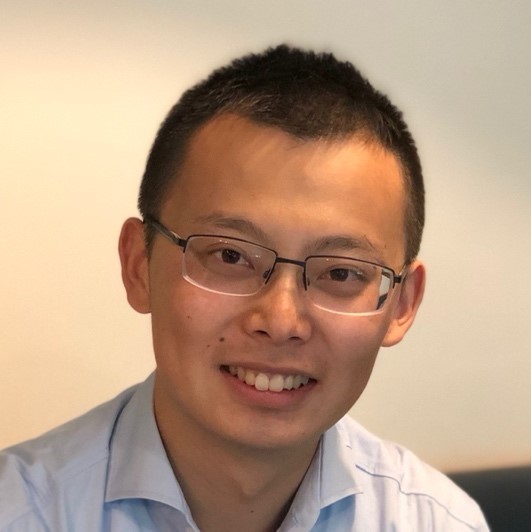
Bolun Xu is an assistant professor at Columbia University, Department of Earth and Environmental Engineering, with affiliation in the Department of Electrical Engineering, and a core faculty in Columbia Electrochemical Energy Center. His research interests include electricity markets, energy storage, power system optimization, and power system economics. He received B.S. degree from Shanghai Jiaotong University, Shanghai, China, in 2011; M.Sc degree from Swiss Federal Institute of Technology, Zurich, Switzerland in 2014; and Ph.D. degree from University of Washington, Seattle, U.S. in 2018; all in Electrical Engineering. Before joining Columbia, he was a postdoc at MIT jointed hosted by MIT Energy Initiative and Lab for Information and Decision Systems.

Dr. Yuan Yang is currently an associate professor of materials science in the department of applied physics and applied mathematics at Columbia University. He received his B.S. in physics at Peking University in 2007, followed by Ph.D. in materials science and engineering at Stanford University in 2012. After three years as a postdoc in the department of mechanical engineering at MIT, he joined Columbia University in 2015. Dr. Yang’s research interests include advanced energy storage and thermal energy management. He has published more than 100 peer-reviewed papers with a total citation over 30,000 times. He is a Scialog fellow on Advanced Energy Storage and a Clarivate Highly Cited Researcher in 2020 and 2021. He has won Materials Today Rising Star Award in 2022, and 3M Non-tenured Faculty Award in 2021.
PRESENTATION ABSTRACTS
Towards Net Zero
Yang Shao-Horn – JR EAST Professor of Engineering, Departments of Mechanical Engineering and Materials Science & Engineering, and the Research Laboratory of Electronics at MIT
Abstract coming soon!
Tracking Degradation in Multilayer Battery Cells with High Chemical and Temporal Resolution
Lauren Marbella – Assistant Professor, Chemical Engineering, Columbia University
Anode-free batteries offer a route to improve the energy density at both the cell and stack level, which is particularly important to advance electrified transportation. However, anode-free batteries exhibit poor Coulombic efficiency and short circuiting due to the formation of high surface area Li filaments during deposition. In order to understand the precise mechanisms of failure in these systems, we must develop new tools to quantitatively detect Li microstructural growth, dead Li formation, and electrolyte decomposition in realistic commercial cells. In this talk, I will discuss recent advances in operando NMR spectroscopy to detect Li loss mechanisms in multilayer battery cells.
Quantum Theory and Machine Learning for Electrochemical Energy
Alex Urban – Assistant Professor, Chemical Engineering, Columbia University
Electrochemical energy processes, such as battery energy storage and electrocatalytic energy conversion, are fundamentally governed by phenomena on the electronic and atomic scales. First-principles (quantum-mechanics based) theory is in principle an ideal tool to characterize and understand materials properties on such microscopic scales, but its computational complexity limits applications to tiny idealized model systems, often at zero temperature and pressure. We make use of automation, data science, and machine learning (ML) to overcome this limitation by accelerating first-principles calculations, extrapolating to realistic temperatures, and aiding with the interpretation of simulation results. I will give a perspective of our recent research on battery degradation and metal extraction, and I will show an example how ML-augmented quantum theory can guide the development of lithium thiophosphate electrolytes for solid-state batteries.
Towards High Performance Battery Pack Management using Pulse Injection Aided Machine Learning
Matthias Preindl – Associate Professor, Electrical Engineering, Columbia University
Lithium-ion battery (LIB) degradation is often characterized at three distinct levels: mechanisms, modes, and metrics. Recent trends in diagnostics and prognostics have been heavily influenced by machine learning (ML). ML can be leveraged to gain a unique multi-level perspective on characterizing LIB degradation and it can improve accuracy especially when combined with perturbation techniques. This pulse injection aided machine learning technique (PIAML) matches or exceeds existing techniques that lay the foundations for this framework. It is compatible with typical battery pack designs and does not require dedicated sensors or electronics. This framework can inform optimal management of lithium-ion systems, thus extending lifetimes and reducing costs.
Energy Storage Technologies for Grid Services
Bolun Xu – Assistant Professor, Earth and Environmental Engineering, Columbia University
Energy storage is the cornerstone for future low-carbon power systems. Finding the right storage technology to provide various grid services is crucial for investment decisions and ensuring reliable delivery of the grid services. Energy storage is undergoing rapid developments, and different technologies have distinct operating, cost, and lifetime characteristics. On the other hand, grid services have diverse storage response speed, duration, efficiencies, and revenue requirements. This talk provides an overview of current practices of energy storage participating in grid services and will summarize challenges and opportunities in future storage technology developments and grid integration schemes.
POSTER PRESENTERS
Physics Based Model Parameterization for Phenomenological Discovery in Electrochemical Systems
The continued development of electrochemical energy storage systems, and particularly lithium-ion batteries, is critical to enabling a sustainable energy future. However due to the inherently complicated nature of these systems, they are difficult to study and subsequentially improve. By employing physics based models coupled with simple experiments, statistics, and machine learning, one can efficiently cut through the complexity and draw nuanced conclusions about factors influencing their operation and degradation.
John Bernard graduated from Northeastern University in 2019 with Bachelors degrees in Chemical Engineering and Electrical Engineering. Before coming to Columbia, he worked for Nano-C Inc. doing application development and scale-up for nanostructured carbon materials. He is a 3rd-year Ph.D. student in the Department of Chemical Engineering, where he builds mathematical models to study electrochemical energy storage systems. His research has focused on the effect of binders on Lithium transport through cathodes, and more recently he is employing models to study new and emerging battery chemistries targeted toward grid-scale storage solutions.

Tandem Electrocatalytic-Thermocatalytic Reaction Schemes for CO2 Conversion to Value-Added Oxygenates
One possible solution to closing the loop on carbon emissions is using CO2 as the carbon source to generate high-value, multi-carbon products. However, CO2 is thermodynamically stable and difficult to convert directly into oxygenated hydrocarbons in a single reactor. Therefore, the application of tandem reaction strategies coupling thermo-, electro-, or plasma-catalysis are necessary for effectively upgrading CO2. Here, we focus on two tandem electrochemical-thermochemical reaction strategies: (1) CO2 electrochemically reduced into syngas followed by the thermochemical methanol synthesis reaction, and (2) CO2 electrochemically reduced into ethylene and syngas followed by the thermochemical hydroformylation reaction to produce propanal and 1-propanol. We present experimental results for the proposed reaction schemes, as well as a comparative analysis of the energy costs and prospects for net CO2 reduction. Tandem reaction systems can provide an alternative approach to traditional catalytic processes, and these concepts can be further extended to other chemical reactions and products.
Akash Neal Biswas received a B.S. in Chemical Engineering from the University of California, Los Angeles and is currently a Chemical Engineering PhD student in the Chen group at Columbia University. His research is focused on hybrid catalytic reaction schemes for carbon dioxide conversion to value-added products, in particular the coupling of thermochemical, electrochemical, and plasma chemical processes.
Solar Fuels Research Group Overview
This poster provides an overview of research activities for the Solar Fuels Research Group at Columbia University.
Daniela A. Bushiri received her B.S. in Chemical Engineering from New Jersey Institute of Technology. She is now an NSF Graduate Research Fellow and Provost Diversity Fellow PhD student at Columbia University with a research focus on developing electrocatalysts for Nitrates/Nitrogen conversion to Ammonia. Her project is co-advised by Dr. Esposito and Dr. Chen. Outside of research, Daniela enjoys dancing to afrobeats, writing poetry and having deep conversations. Daniela is proudly Congolese/South African and cares deeply about the various issues in Africa, especially the energy crisis.

Development of beyond Li-ion batteries using earth abundant alkali metals (e.g., Na and K)
Development of beyond Li-ion batteries using earth abundant alkali metals (e.g., Na and K) alleviates reliance on Li with potentially cheaper technologies. At present, it is unclear if the electrolyte design principles used for Li-ion chemistries can be used to optimize K-ion batteries (KIBs). Fluoroethylene carbonate (FEC) is a well-known electrolyte additive used to improve capacity retention in Li-ion batteries. We show that FEC addition to KIBs, however, results in an immediate decrease in capacity. Using a combination of solid-state nuclear magnetic resonance spectroscopy, X-ray photoelectron spectroscopy, and electrochemical impedance spectroscopy, we show that FEC decomposes during cycling to form insoluble KF and K2CO3 on the anode surface, which correlate with increased interfacial resistance. Our results strongly suggest KIB performance is sensitive to accumulation of an inorganic SEI, and entirely new approaches to KIB electrolyte engineering are needed.
Drew Ells received undergraduate degrees in chemical and systems engineering at Washington University in St. Louis before beginning his PhD in chemical engineering in 2019. Working under Prof. Lauren Marbella, his work on beyond Li-ion battery chemistries connects cell performance and lifetime to structural and chemical degradation of the electrode and electrolyte. To do so, his research couples a suite of electrochemistry methods with nuclear magnetic resonance for in-depth chemical characterization. Drew has been awarded both the NSF GRFP and DoD NDSEG fellowships for his work on potassium batteries.
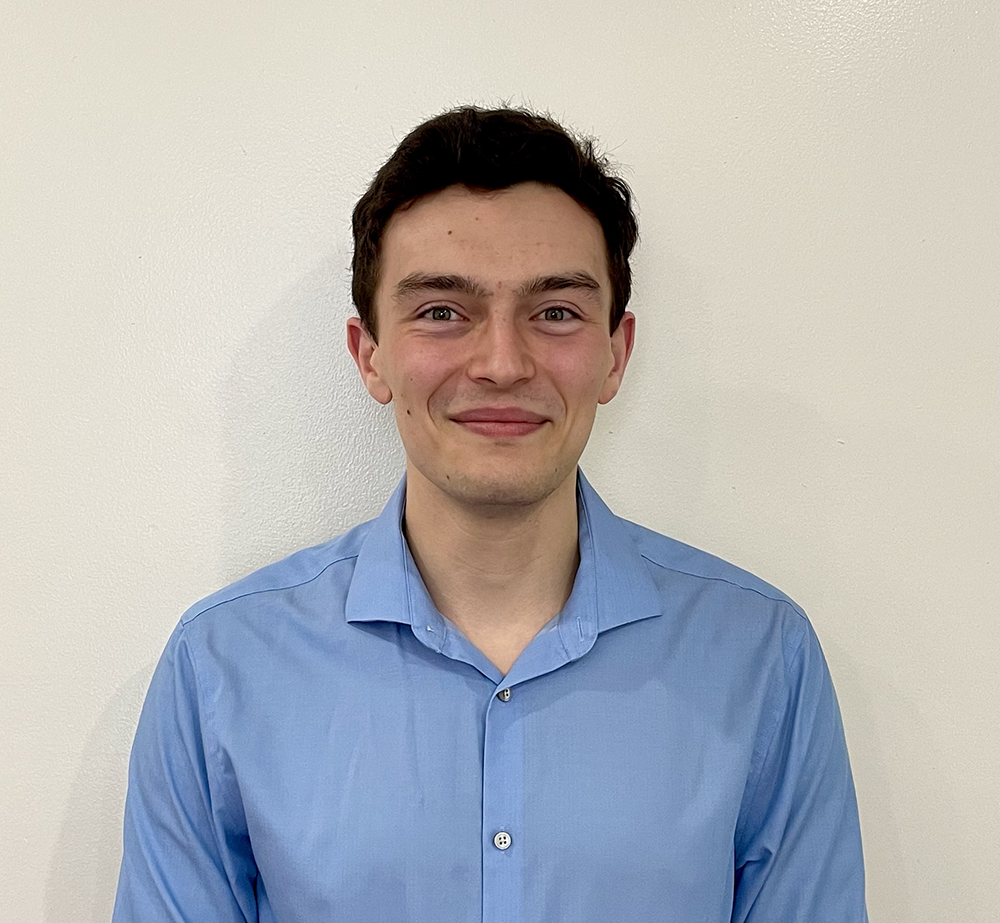
Fast Time-domain Impedance Spectroscopy of Lithium-ion Batteries using Pulse Perturbation
Electrochemical impedance spectroscopy (EIS) is a useful diagnostics technique for lithium-ion batteries but measurements can last several hours. Fast pulse impedance spectroscopy (PIS) is thus proposed using just 2 minutes of pulse perturbation data and classic signal processing techniques. The method is verified using experimental data collected from 6 lithium-ion cells aged under different temperatures and charging levels. Results show that PIS can extract high-quality Nyquist plots for overpotential analysis. Comparison is made between the frequency- and time-domains using the Randles and convolution-defined diffusion equivalent circuit models. PIS is a practical time-domain impedance spectroscopy method that experimentally links EIS and convolution-defined diffusion.
Youssef Fahmy received his M.S in Electrical Engineering at Columbia University, New York, NY in 2022, his B.Sc. in Physics from Brandeis University, Waltham, MA, and B.Sc. in Electrical Engineering from Columbia University, New York, NY through a joint program in 2020. He was a research associate at the Fraden MRSEC Group, Brandeis University from 2017-18. Youssef has worked on high voltage systems with the Columbia University FSAE electric racing vehicle team since 2018. He is currently a PhD student at Columbia University in the Power Electronics and Motor Drives Laboratory under Professor Matthias Preindl. His research interests include switching converters, electric vehicles, and low emissions resources.

The transition of energy production from fossil fuels to renewable energy is expected to play a key role in reducing global emissions. A promising method to store renewable energy is through electrolysis, where renewable energy is used to convert low-cost feedstocks into storable chemical fuels. However, the activity, stability, and selectivity of electrocatalysts must first be optimized to enable cost-effective and efficient electrolysis. A novel approach to tune electrocatalyst performance is to apply ultrathin oxide coatings directly to the electrocatalyst surface. At the Solar Fuels lab, we have shown that encapsulating electrocatalysts with an oxide overlayer enhances performance, selectivity, stability, and poison resistance. Additionally, electrolyzer costs must be decreased in a renewable energy future. Membraneless electrolyzers offer exciting opportunities to decrease costs through their simplicity. Membrane-free devices have potential advantages in terms of durability and electrolyte flexibility that can enable electrolyzers to be used in new operating regimes and/or applications.
Daniela Fraga grew up in Quito, Ecuador and received her B.S in Chemical Engineering from Worcester Polytechnic Institute (WPI) and M.S from Columbia University. She is a third year Ph.D. student and her research interests are seawater/brine electrolysis, electrochemical flow cells, and electrocatalyst architecture. She is part of the Chemical Engineering Graduate Student Organization, cycling club, and tango club at Columbia University.

Tandem Electrocatalytic-Thermocatalytic Reaction Schemes for CO2 Conversion to Value-Added Oxygenates
One possible solution to closing the loop on carbon emissions is using CO2 as the carbon source to generate high-value, multi-carbon products. However, CO2 is thermodynamically stable and difficult to convert directly into oxygenated hydrocarbons in a single reactor. Therefore, the application of tandem reaction strategies coupling thermo-, electro-, or plasma-catalysis are necessary for effectively upgrading CO2. Here, we focus on two tandem electrochemical-thermochemical reaction strategies: (1) CO2 electrochemically reduced into syngas followed by the thermochemical methanol synthesis reaction, and (2) CO2 electrochemically reduced into ethylene and syngas followed by the thermochemical hydroformylation reaction to produce propanal and 1-propanol. We present experimental results for the proposed reaction schemes, as well as a comparative analysis of the energy costs and prospects for net CO2 reduction. Tandem reaction systems can provide an alternative approach to traditional catalytic processes, and these concepts can be further extended to other chemical reactions and products.
Samay Garg is a second year Ph.D. Student in the Chen Research Group at Columbia University, where his research focuses on developing electrocatalytic processes for chemical synthesis. Prior to attending Columbia, he completed his bachelors degree at the University of California, Berkeley, where studied water electrolysis and fuel cells as a research affiliate in Dr. Adam Weber’s research group at Lawrence Berkeley National Laboratory. He is the recipient of and NSF Graduate Research Fellowship.

Machine learning and quantum-guided modeling of metal oxide thermodynamic properties at high temperatures
Investigating and optimizing processes at high temperatures is experimentally challenging, and first principles modeling is computationally demanding and typically too approximate. We apply physics-based machine-learning models to the prediction of metal oxide reduction temperatures in high-temperature smelting processes and to the prediction of metal oxide melting temperatures in thermal recycling that are commonly used for the extraction of metals from their ores and from electronics waste and have a significant impact on the global energy economy and greenhouse gas emissions. Here, we introduce a hybrid approach combining zero-Kelvin first-principles calculations with both unsupervised learning and regression models. The hybrid models predict accurate reduction and melting temperatures of unseen oxides, are computationally efficient, and surpass in accuracy computationally much more demanding first-principles simulations that explicitly include temperature effects. This approach provides a general framework for learning high-temperature thermodynamic properties of metal oxides.
Vahe Gharakhanyan is a 4th year Ph.D. candidate in Materials Science and Engineering, working with Dr. Alexander Urban on “Machine learning and quantum-guided inverse design of materials with target thermodynamic properties.” During his Ph.D. studies, Vahe has worked on similar problems for materials sustainability as an AI resident at Google X, Alphabet’s moonshot factory. Prior to joining Columbia, he received degrees in Materials Science, Chemical Engineering, Electrical Engineering and Computer Sciences from the University of California, Berkeley, where he worked with Prof. Mark Asta on “Thermodynamics of charged defects with density functional theory.”

Spatially resolved and operando detection of cathode degradation in Li-ion batteries
The high energy densities of Ni-rich and Mn-rich lithium transition metal oxide cathodes have garnered immense interest for their potential to improve the performance of Li-ion batteries. Unfortunately, degradation at the cathode/electrolyte interface leads to poor cycling performance of these materials. The chemical mechanisms underpinning this degradation are difficult to study due to the delicate and highly heterogeneous nature of the cathode electrolyte interphase (CEI) formed on composite cathode films. Here, we use a combination of ex and in situ nuclear magnetic resonance (NMR) spectroscopy, X-ray photoemission electron microscopy (XPEEM) and electron paramagnetic resonance (EPR) spectroscopy to characterize chemical and spatial heterogeneities in the CEI deposited on LiNi0.8Mn0.1Co0.1O2 (NMC811) and LiNi0.5Mn1.5O4 (LNMO) cathodes. Together, these spatially resolved and time resolved characterization techniques reveal the reaction mechanisms at play in CEI formation which are closely related to the performance decline that is characteristic of these materials.
Julia Hestenes is starting her 4th year as a Materials Science PhD student and NSF GRFP Fellow in the Department of Applied Physics and Applied Mathematics where she is conducting her thesis work in Prof. Lauren Marbella’s research group. Prior to Columbia, she obtained her Bachelor’s degree in Physics from UC Berkeley. Julia’s research in the Marbella Lab focuses on understanding the interfacial degradation of emerging cathode materials for next-generation Li-ion batteries with advanced characterization techniques like nuclear magnetic resonance (NMR) spectroscopy and x-ray photoemission electron microscopy (XPEEM).
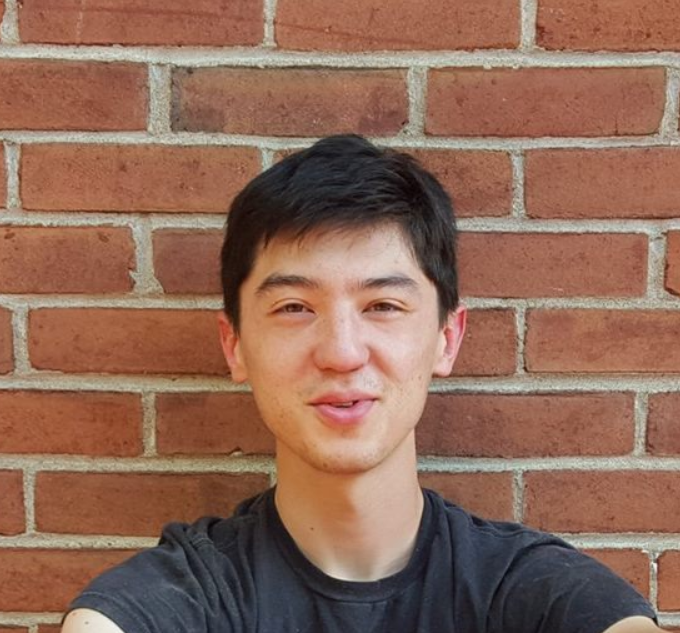
A Family of Fully Balanced and Vertically Stacked Multilevel Power Converters with Linear Scaling
This work presents a stacked capacitor multilevel topology that operates through capacitive power transfer. The most basic interpretation of this topology is a set of series capacitors where each additional capacitor defines a level of the converter. The functionality of the converter is controlled through the movement of power between these capacitors. It is shown that the amount of power that needs to be moved between capacitances to maintain voltage balance in steady state is less than the output power of the converter. Four capacitive transfer methods are provided as well as state-space representations for each that can be used for future control formulations. Each capacitive transfer method is benchmarked against each other with respect to component quantities, stresses, and transient step response settling times. Lastly, selected steady state transient high-fidelity simulations are provided.
Matthew Jahnes received the B.S. degree in electrical engineering from Rensselaer Polytechnic Institute, Troy, NY, USA, in 2017, and the M.S. degree in electrical engineering from Columbia University, New York, NY, USA, in 2019. He is currently working toward the Ph.D. degree with Motor Drives and Power Electronics Laboratory (MPLab), Columbia University, New York, NY, USA. His research interests include novel power conversion topologies and high efficiency/high power density converter design.
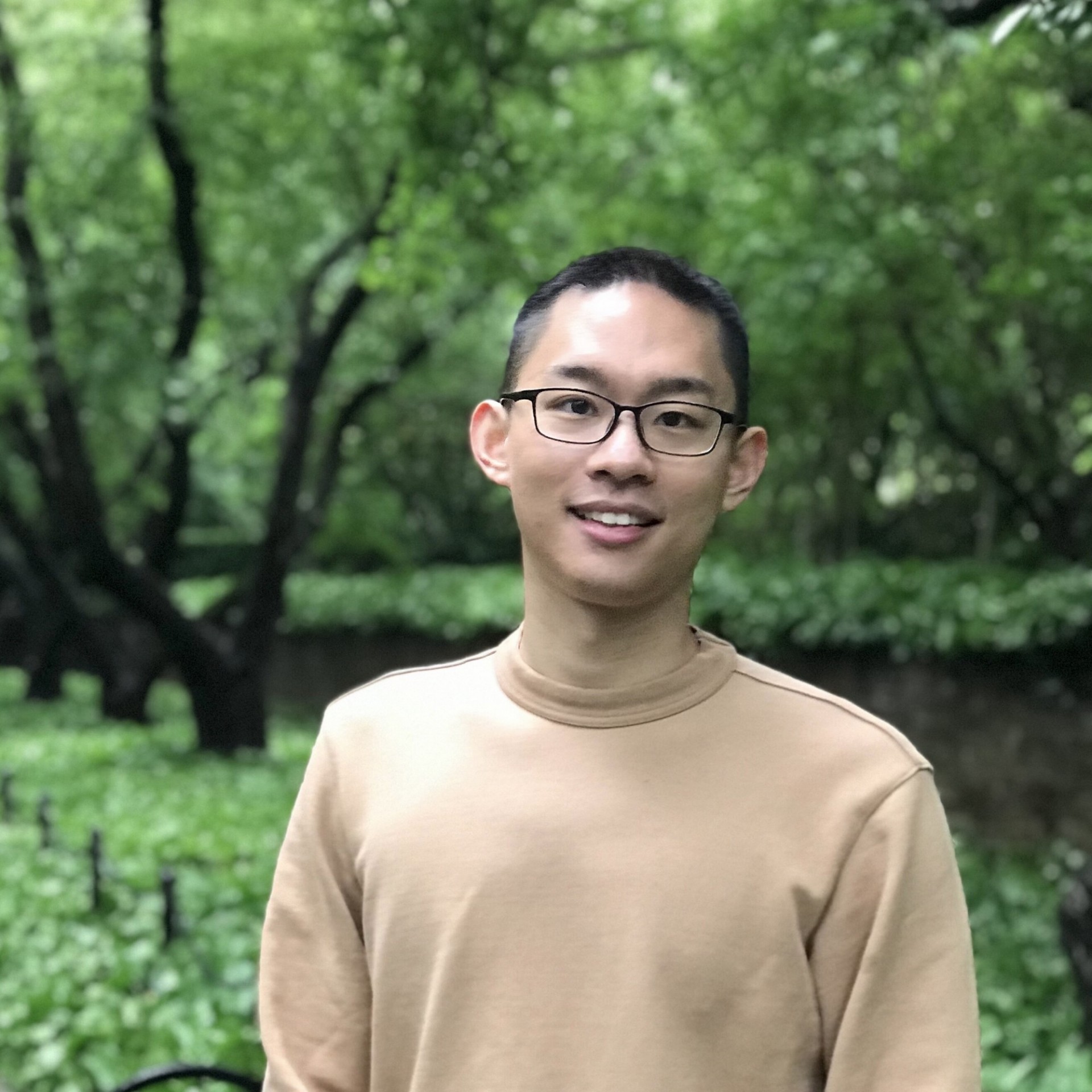
Stabilizing lithium plating in polymer electrolytes by concentration-polarization-induced phase transformation
It is widely accepted that concentration polarization in liquid electrolytes promotes whisker growth during metal deposition, and therefore, high salt concentration is favored. Here, we report unexpected opposite behaviors in solid polymer electrolytes: concentration polarization can induce phase transformation in a polyethylene oxide (PEO) electrolyte, forming a new PEO-rich but salt-/plasticizer-poor phase at the lithium/electrolyte interface, as unveiled by stimulated Raman scattering microscopy. The new phase has a significantly higher Young’s modulus (∼1–3 GPa) than a bulk polymer electrolyte (<1 MPa). We hereby propose a design rule for PEO electrolytes: their compositions should be near the boundary between single-phase and two-phase regions in the phase diagram so that the applied current can induce the formation of a mechanically rigid PEO-rich phase to suppress lithium whiskers. Li/PEO/LiFePO4 cells with concentration-polarization-induced phase transformation can be reversibly cycled 100 times, while cells without such transformation fail within 10 cycles, demonstrating the effectiveness of this strategy.
Tianwei Jin is a fourth-year PhD student in Prof. Yuan Yang’s group in Materials Science and Engineering. At Columbia, I am mainly interested in increasing the mileage of electric vehicles in a safe way, and have published three papers as the first author on nonflammable liquid electrolytes, polyethylene oxide-based polymer electrolytes, and structural batteries. Now, I am working on all-solid-state lithium-sulfur batteries. Hope the rich experience in electrolyte systems and corresponding mechanism studies can well prepare me for an industry or academia job after graduation.
Characterization and Mechanistic Investigation of Precipitation in Static Zn-Br Battery
Static zinc-bromine batteries (ZBBs) are a promising and low-cost grid electrochemical energy storage device for energy generation shifting to renewable energy. However, their long-run cycling performance degrades due to other comparative reactions. In this work, a layered-structure zinc hydroxide bromine precipitated at the cathode surface was characterized and identified for the first time, but its formation mechanism still remains unknown. We studied the influence of the different charge conditions and pH of electrolytes on precipitation reactions. With the support of titration and electrochemical data, we proposed a stepwise reaction mechanism to predict the parameters and conditions that can avoid its formation, improving batteries' performance and extending their cycle life in the long run.
Dongrun Ju graduated from Stevens Institute of Tech. with B.E. in Chemical Engineering. An undergraduate research project about organic solar cells has directed her to an energy-sustainability-related Ph.D. journey. She is a second-year Ph.D. student and currently works on improving a grid energy storage system, static Zn-Br batteries, in the Steingart group.
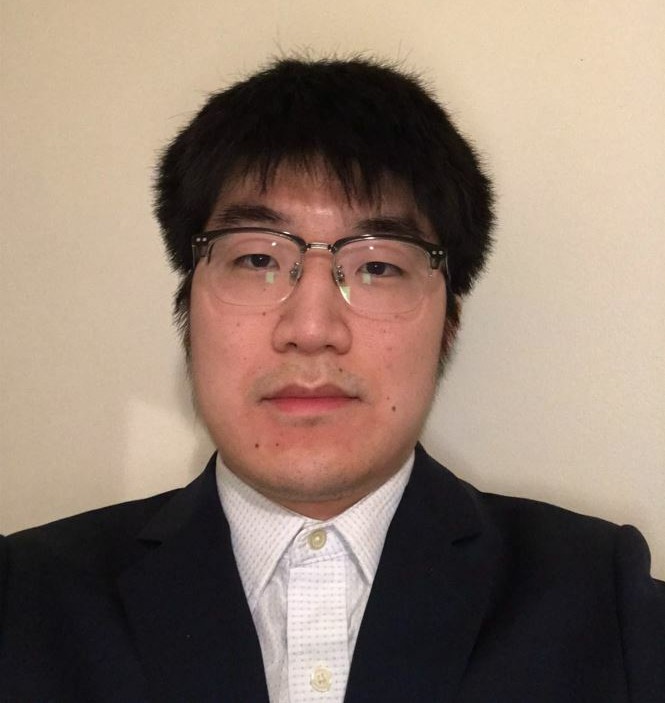
The Reductive Leaching of Chalcopyrite using Vanadium(II) as the Reducing Agent – Continuous Reactor Designs for the Production of Copper
Over this coming decade, copper demand in the United States is expected to increase significantly due to the emergence of the green industry. However, these demands will be difficult to fulfill relying solely on pyrometallurgical processes due to the decreasing copper ore grades and high production costs. As such, alternative methods for producing copper, such as hydrometallurgy, need to be further investigated.
Unlike traditional hydrometallurgical processes which involve oxidation of chalcopyrite (CuFeS2), which accounts for 70% of the global copper supply, reductive leaching of chalcopyrite using vanadium(II) as the reducing agent shows good promise. The chalcopyrite can react with vanadium(II) at ambient temperatures to recover all the copper in the chalcopyrite.
This poster presents the use of laboratory-scale reactors that can be used to leach chalcopyrite with vanadium(II) in a continuous process. These reactor designs will be used as models to enable the processing of chalcopyrite at a higher scale.
Charles Kim graduated from Ohio State University in 2019 with a Bachelors degree in chemical engineering. Before coming to Columbia, he worked at Veelo Technologies as a process engineer where he worked with electroless and electrolytic plating processes of copper and nickel on nonwoven carbon fiber. At Columbia, he is researching hydrometallurgical methods to recover copper from chalcopyrite, especially the reductive leaching of chalcopyrite using vanadium(II) and ways to implement it in a continuous scale.
In-Situ NMR Characterization of Lithium Deposition Morphologies in Multilayered Anode-Free Batteries
Abstract: Anode-free batteries (AFBs) provide a promising pathway towards significantly increasing energy density, reducing cost, and improving the safety of Li metal batteries. However, AFBs show low cycling stability as Li is irreversibly lost as dead Li and solid electrolyte interphase (SEI), exacerbated by Li’s tendency to nucleate into high surface area morphologies. This motivates the objective to track the evolution of morphology and loss of Li of AFBs in operation. In-situ NMR offers non-invasive characterization of Li growth with temporal resolution. We demonstrate a novel operando NMR technique for multilayered AFB, and compare the differences in electrochemical performance of NMC and LFP as two candidate cathode chemistries. We observe similar rates of dead Li accumulation in both types of cells, while the rate of SEI formation is greater in Cu/NMC cells. We correlate this to more porous Li morphologies in Cu/NMC cells, causing lower capacity retention than Cu/LFP cells.
Yongbeom (Eric) Kwon is a PhD student in Chemical Engineering at Columbia University. He works on new approaches to characterize battery materials using NMR under the direction of Dr. Lauren Marbella. NMR uniquely offers dynamic molecular descriptions evolving with device operation, allowing the correlation between molecular-level phenomena and macroscopic performance metrics of batteries in practical scenarios. These insights provide basis for material design and functional engineering of novel energy storage solutions. Eric received a BS and MS in Chemical Engineering from Brown University in 2020 and 2021, respectively.

Understanding degradation in Li-ion battery cathodes on the atomic scale
Most energy-dense Li-ion battery cathodes are derived from LiCoO2 (LCO) and rely on the scarce transition metal Co. Although LiNiO2 (LNO) is chemically similar, LNO and other Co-free Ni-rich cathodes suffer from rapid degradation during cycling, leading to safety concerns and preventing commercial adoption.
First-principles electronic structure theory provides an ideal tool to probe the atomic- and electronic-scale features that cause the instability of LNO. We applied first-principles modeling to shed light on surface reactivity using a thermodynamic methodology for the prediction of surface electrode reconstructions that we recently developed (Li et al., ACS Appl. Energy Mater. 5, 2022, 5730–5741). We implemented this approach in a computational framework automating time-consuming manual steps. We determined the self-reduction mechanism of LNO and the results provide insight into the initial stages of surface degradation in Ni-rich cathodes and lay the foundation for the computational design of cathode materials stable against oxygen release.
Xinhao Li is a 4th year Ph.D. candidate in the department of chemical engineering at Columbia University. His research in Dr. Alexander Urban’s group focuses on understanding atomic-scale properties of Li-ion battery cathode materials using electronic structure theory and data-science techniques. A specific focus of his research has been the prediction of electrode surface reactivity. He is the main developer of a Python framework for the automation of surface modeling to accelerate materials discovery. Prior to joining Columbia, he graduated from the University of Edinburgh, Scotland, UK.
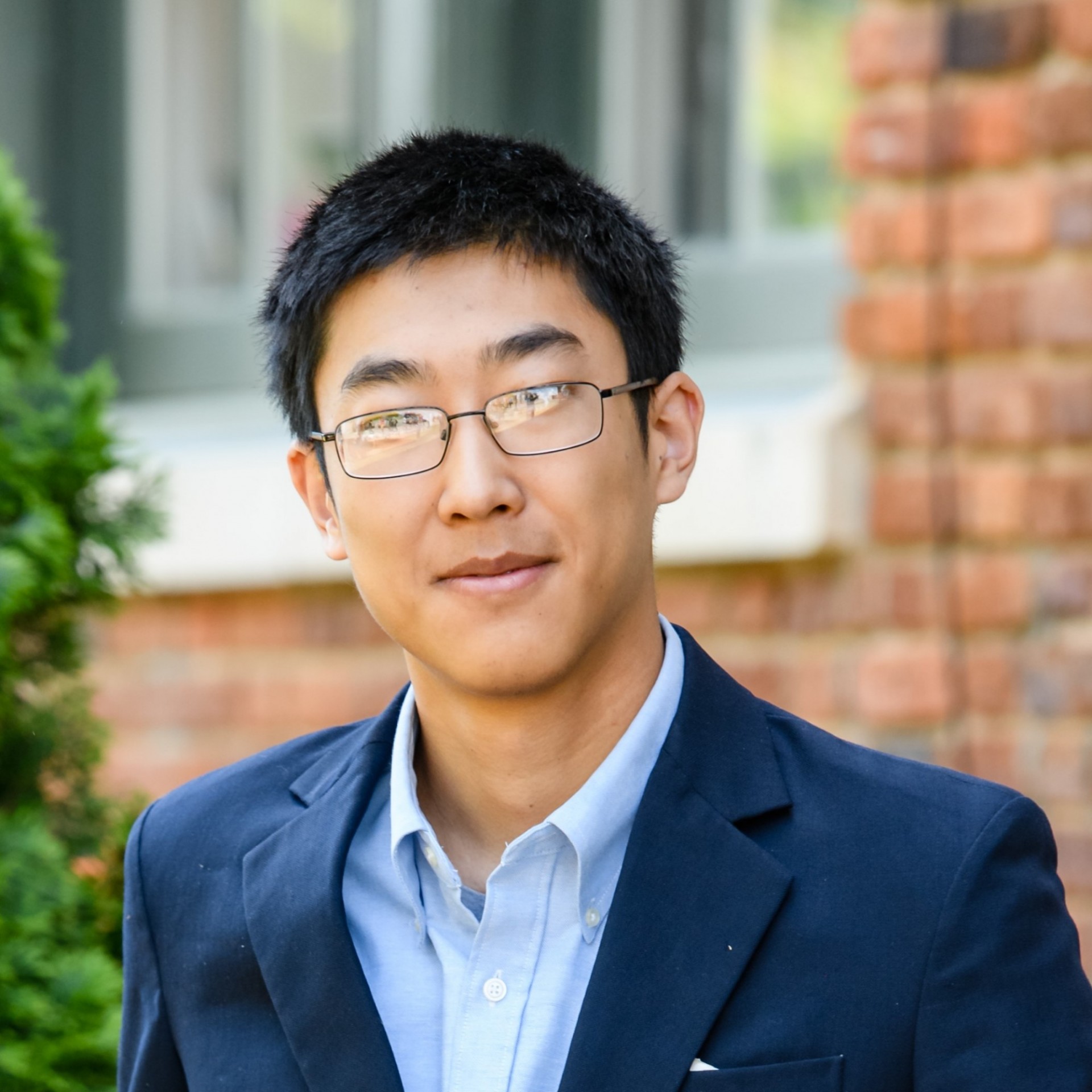
Enhancing Glycerol Electrooxidation from Synergistic Interactions of Platinum and Transition Metal Carbides
To effectively utilize glycerol as a fuel for electrochemical fuel cells, it is necessary to optimize catalysts for effective C-C bond cleavage and complete oxidation of reaction intermediates to achieve maximum efficiency. This work showed that the synergistic interactions of platinum (Pt) with transition metal carbide (TMC) substrates, such as tungsten carbide (WC) and tantalum carbide (TaC), fulfilled these criteria. The TMC-supported Pt catalysts showed higher activity and selectivity for complete glycerol oxidation than commercial 10 wt% Pt/C. In-situ FTIR analysis revealed that 5 wt% Pt/WC was the most effective catalyst among those tested for complete glycerol oxidation at 0.9 V vs RHE. In-situ X-ray absorption fine structure characterization and density functional theory calculations provided additional insight into the synergistic interactions for glycerol oxidation over Pt/TMC catalysts.
Hansen Mou is a PhD Candidate and an NSF Graduate Research Fellow in Chemical Engineering at Columbia University in the City of New York. He graduated from Clemson University in 2019 with a B.S. in Chemical Engineering, and an M.S. in Chemical Engineering from Columbia in 2021. Before studying at Columbia, he has been involved with other areas of clean energy research, from slurry electrodes for vanadium redox flow batteries at RWTH-Aachen University in Aachen, Germany, to characterizing anion exchange membranes for use in next-generation fuel cells and electrolyzers at the University of Delaware. He is currently studying and developing electrocatalysts for the electrochemical valorization of biomass-derived molecules.

Comparing the Lifetime Value of Lithium-ion Battery Technologies in Wholesale Electricity Markets
Lithium-ion batteries are becoming critical flexibility assets in future electric power systems. Batteries can arbitrage price differences in wholesale electricity markets to make a profit, while at the same time reduce total system operating costs and improve renewable energy integration. However, lithium-ion batteries have a limited lifetime due to capacity degradation, and one battery pack can only make a limited profit before reaching its end-of-life. In this study, we screen the profit potential of LFP, NMC, NCA batteries in all nine wholesale electricity markets in North America. We apply a systematic dynamic valuation framework that finds the highest revenue potential for the considered lithium-ion battery project subjecting to its degradation mechanism. The study revealed that valuation varies across locations, depends on battery technology, and storage duration but calendar life has a greater impact on battery value than cycle life at the battery’s mid-life, while cycle life has overall more impact by the end of life.
Umar Salman received a B.S. degree in Electrical/Electronic Engineering from the University of Lagos, Nigeria in 2015. He obtained his M.S. degree in Electrical Engineering from King Fahd University of Petroleum and Minerals (KFUPM), Dhahran, Saudi Arabia in 2020. Before joining Columbia University, he was a research assistant at the Research Institute, KFUPM, and the National Power Academy, Saudi Arabia. His research interests include modeling, and optimization of complex systems, such as energy storage systems, and energy markets, and applying machine learning to power systems.

Polycarbonate solid electrolytes for structural batteries with enhanced mechanical properties
Polymer electrolytes (PEs) are becoming increasing important to replace flammable liquids in lithium-ion batteries. PEs are light-weight and possess excellent processing, which makes them a great choice for large-scale applications. Most polymers show good mechanical properties but low ion conductivity. Great efforts are being made to increase its ion conductivity by adding plasticizers to the matrix, which usually leads to a significant reduction in the mechanical performance. A polycarbonate-based solid polymer electrolyte (SPE) that shows a combination of good electrochemical and mechanical performance is presented. The SPE can be in-situ polymerized thermally with a glass fiber separator and demonstrates good cycling performance with LiFePO4/Li cells. High modulus and strength of the SPE along with good ion conductivity of ca. 0.3 mS/cm enables a strong connection and efficient ion diffusion between the two electrodes. This exceptional combination can be used to improve the mechanical properties of structural batteries on the material-level.
Gerald Singer is a materials scientist whose work is focused on of high-performance lightweight materials for energy storage and structural applications. He worked in several successful industry-related research projects with the goal to improve the performance of carbon fiber-reinforced polymers for electronic cars and polymer-based (nano)particle-reinforced composites of marked leading companies in Europe. After his graduation in Chemistry at Technical University Vienna, he received a PhD in materials science at University of Natural Recourses and Life Sciences Vienna. At UNSW Sydney he developed a polymer electrolyte for structural super-capacitors and currently works on structural batteries at Columbia University as Erwin-Schroedinger Fellow.
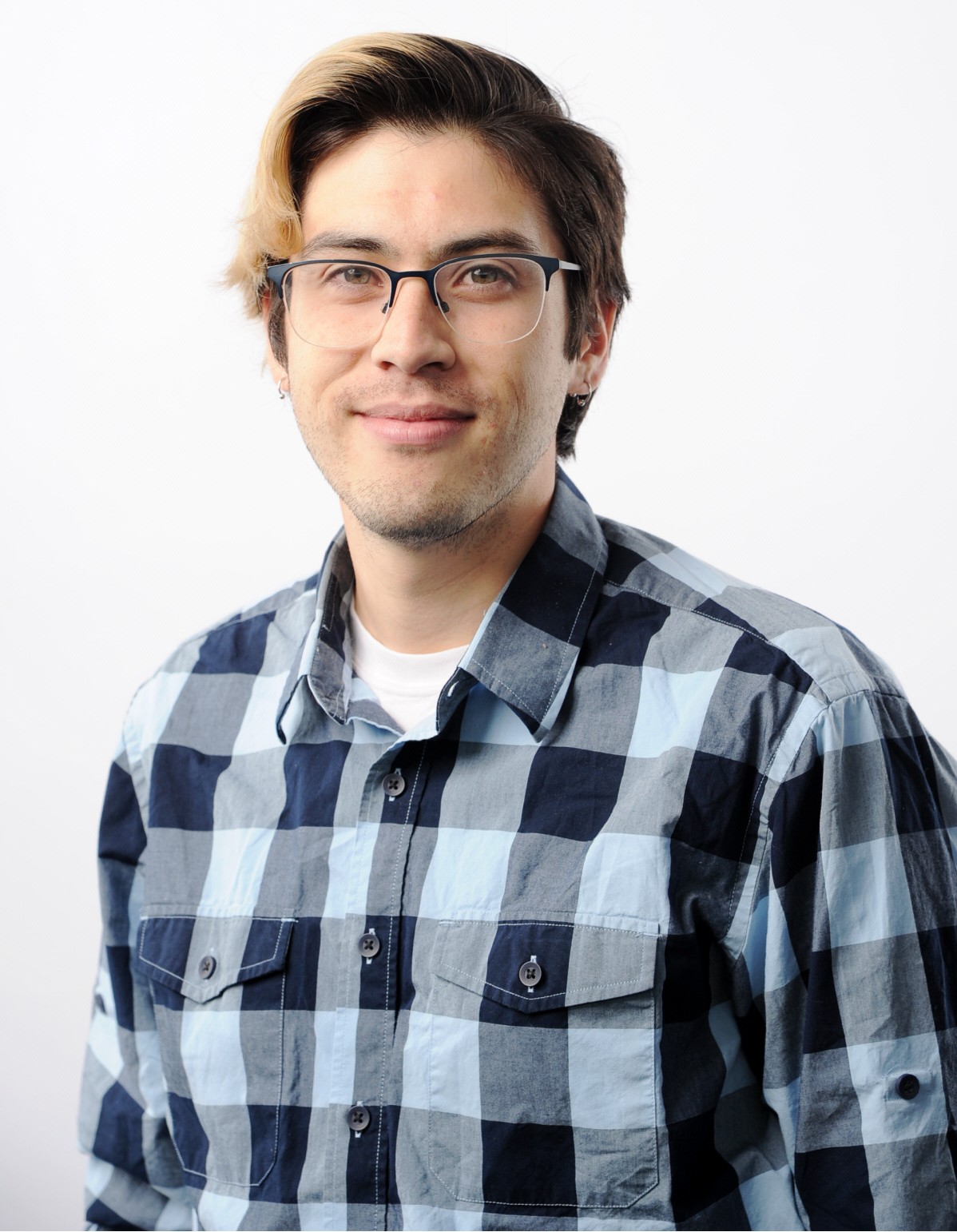
Solar Fuels Research Group Overview
This poster provides an overview of research activities for the Solar Fuels Research Group at Columbia University.
William Stinson is a 3rd year chemical engineering PhD student in Prof. Daniel Esposito’s research group. Prior to Columbia, he obtained his Bachelor’s degree in chemical engineering from Northeastern University as well as worked for 3+ years in industry developing Aluminum-Seawater batteries. Will’s research in the Esposito Lab focuses on local electrochemical measurements for novel photocatalytic systems, and the development of selective nanoscopic coatings.
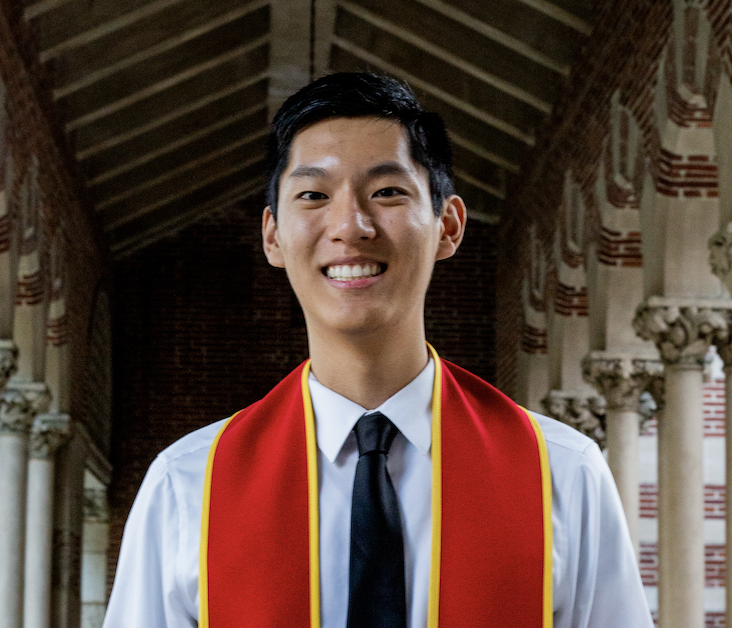
Processing LiFePO4-Li6PS5Br Argyrodite Solid State Batteries and Mitigating their Interfacial Degradation
The highly conductive solid-state sulfide argyrodite electrolyte can enable lithium metal batteries in a safer and more energy dense system; however, this chemistry suffers from passivating electrode degradation mechanisms. Interfacial degradation mechanisms have been readily studied on the cathode side, especially with conventional metal-oxide cathodes. A rising active material candidate, LFP can compete with metal oxide cathodes in terms of cost and lifetime. In this work, we examine the degradation mechanism of the interfacial reaction between the argyrodite electrolyte and lithium iron phosphate. We show that compared to NMC, LFP does not perform better despite operating at a lower voltage. We hypothesize that electrochemical degradation occurs at the interface between the solid electrolyte ion conductor and any electron conductor, namely the active material and carbon additives. Due to the more insulating nature of LFP, large amounts of carbon are needed to enable electronic mobility which in turn cause electrochemical degradation.
Kerry Sun graduated with a B.S in Chemical Engineering from the University of Southern California. He is currently a third-year in the Steingart group working on solid-state electrolytes. He is interested in solid electrolyte stability and interfaces with conventional electrode materials.

Gunnar Thorsteinsson is a second-year PhD student in Dan Steingart’s group. His research focuses on applications of acoustics for non-invasive, non-destructive, in operando probing of failure mechanisms in Lithium batteries. Batteries fail for a variety of reasons. Each failure mechanism carries a characteristic mechanical signature. These symptoms of distress can be monitored using the tools of seismology and health imaging. Steingart’s group pioneered the application of ultrasound in the context of batteries. Gunnar holds a BS degree in Geophysics from the University of Iceland and an MS degree with specialization in Sustainable Energy Engineering from Columbia SEAS.
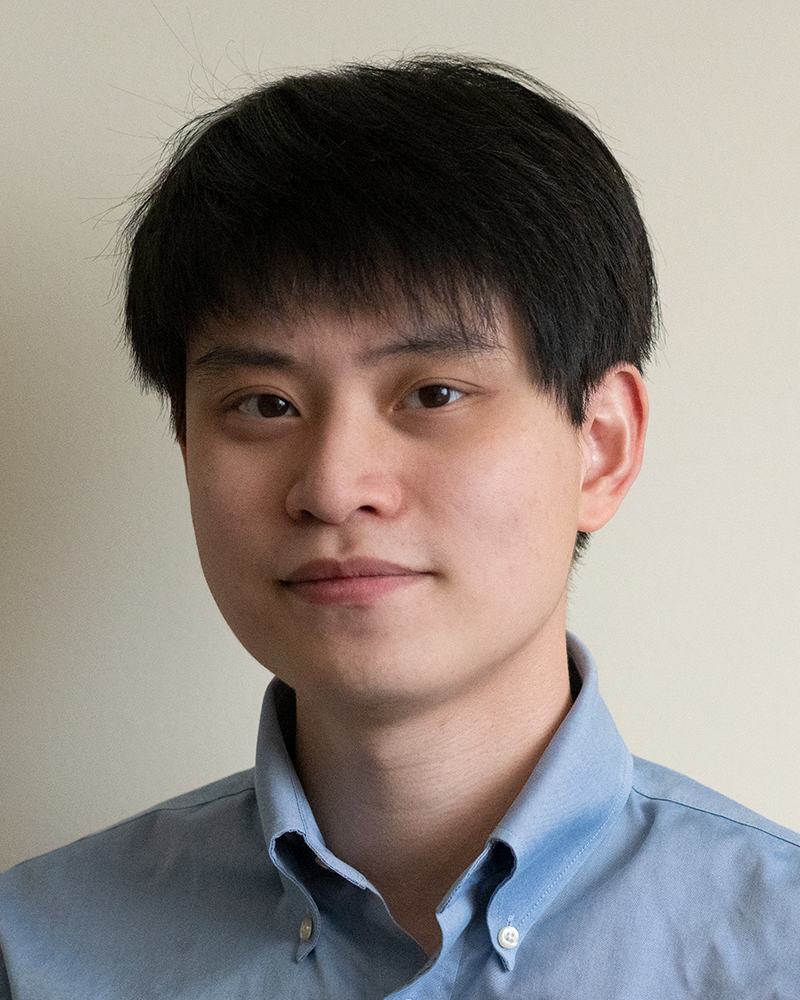
Arbitraging Variable Efficiency Energy Storage using Analytical Stochastic Dynamic Programming
Increasing penetration of renewable energy in power systems increases the fluctuation of electricity prices, and real-time market price arbitrage will become more profitable. Electrochemical battery energy storage can switch between full charging and discharging power in less than a second, providing it with a unique advantage to arbitrage real-time price differences. Although all system operators have allowed energy storage to participate in the wholesale energy markets, current market designs have difficulties in dispatching storage accurately, restricted by the capability of forecasting and the limitation of computation power. We propose a computation-efficient stochastic dynamic programming algorithm for solving energy storage price arbitrage considering variable charge and discharge efficiencies. The proposed approach is demonstrated using historical price data from four price zones in New York Independent System Operator, with case studies comparing the performance of different stochastic models and storage settings.
Ningkun (Nik) Zheng received a B.S. degree from Zhejiang University, Zhejiang, China in 2018; and a M.S. degree from Johns Hopkins University, Baltimore, MD, USA, in 2019. Before joining Columbia, he was a research assistant at Carnegie Mellon Electricity Industry Center, Carnegie Mellon University, Pittsburgh, PA, USA. His research interests include power system economic and energy storage.
Software-Defined Power Electronics Architecture with MPC-Based Power Module to Interface Electric Vehicles and Renewable Sources
Poster abstract: A hierarchical control architecture is designed with model predictive control (MPC)-based power module for generalized renewable applications including single/three-phase grid, solar, battery, electric motor, etc. The hierarchical control architecture is composed of three layers: (1) Central control layer for mode recognition of different types of interfaced load/source, reconstruction of power converter topologies, high level current/voltage/power control, generating references for local power module control and grid services for utility support; (2) Local module control layer for implementing MPC algorithm to track references from central controller with improved dynamic performance, stabilizing common-mode voltage, collecting ADC samplings and generate PWM signals for local power switches; (3) Application layer for the interface with different types of renewable loads/sources including single/three-phase grid, solar, battery, electric motor and so on.
Liwei Zhou received the B.E. and the M.E. degrees both in electrical engineering from Shandong University, China, in 2014 and 2017, respectively. He obtained the Ph.D. degree in electrical engineering from Columbia University, New York City, in 2022. His current research interests include software-defined power electronics, soft-switching techniques for modular power converter, model predictive control, state estimation and other advanced control technologies, grid-connected converter, electric vehicle battery charging control, and inductor design.